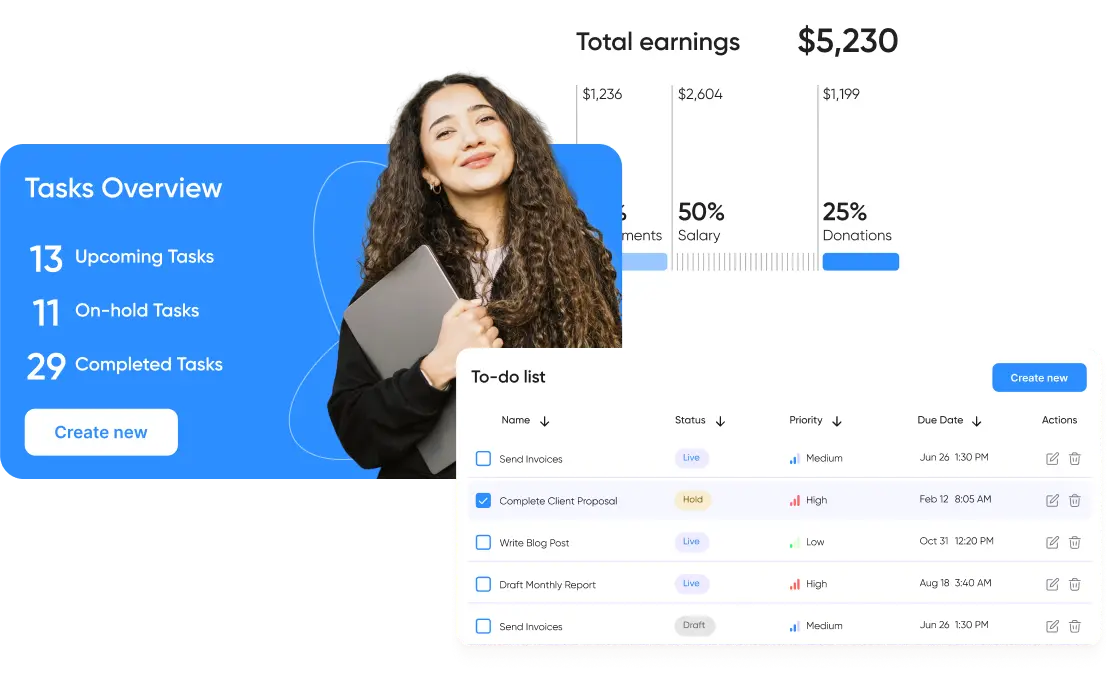Startup
CTO as a Service: Growing and Scaling Your Business Fast with CaaS
Founding a startup is an exciting and satisfying business. It allows infinite innovation but requires responsible decision-making. Unfortunately, the stats show that 9 out of 10 startups fail. The reasons vary, but about 39% of responders in McKinsey's research named wrongful allocation of resources and focus as a leading cause. So, what helps a startup set the right focus and not send the budget down the drain?
Apparently, a lot of it has to do with responsible and experienced C-level executives. They create the roadmap and set the direction. Among the critical C-level suite executives is CTO (Chief Technical Officer).
In this blog post, we will delve into the transformative power of CTO as a Service, exploring how it empowers startups to access strategic technology leadership and expertise without the hefty financial burden.
Supercharge Your Business with CTO as a Service & Scale Your Business Faster
The average annual salary of a CTO in the United States ranges from $94 000 to $256 000. It can be a significant burden for cash-strapped startups and small-sized businesses.
Luckily, the ever-evolving digital landscape adapts to every demand and offers game-changing solutions for every budget needs. That is how the market was introduced to CTO as a Service (CaaS) allowing them to collaborate with C-level professionals even at a more affordable cost.
CTO as a Service (CaaS): Definition & Types
CTO as a service is a consulting service provided by third-party experts that enables small and medium-sized businesses to access the technical expertise and guidance of an experienced Chief of Technology without the associated cost of hiring a full-time C-suite professional.
CTO can be integrated into the team on different terms depending on the startup's requirements. Assessing your organization's needs is key to finding the perfect spot for the CTO to unlock the full potential of your business and help it thrive.
- Full-time offshore
This model envisages a company wanting to outsource CTO to work full-time, similar to an in-house professional. But in this case, the person located offshore and providing tech guidance is engaged in the operations full-time but from a remote location. The benefit of such a model is reduced costs since you do not have to undergo the lengthy recruiting, hiring, and onboarding procedure.
- Fractional CTO
If the scales of your operations do not require a full-time CTO, you can opt for a part-time or fractional role. It means you have issues that a C-suite level manager should cover within a certain time. You can agree on the number of hours weekly or monthly and assign specific tasks to the outsourced CTO services.
For example, you are actively looking for funding and investors, and you need to instill confidence in the tech aspect of your business. CTO can provide the necessary insights and prepare presentations and documentation with technical due diligence. Another task CTO can perform is evaluating tech vendors your startup will cooperate with.
- Interim CTO
This hiring model works well whenever you need someone to fill in for the CTO or support the in-house executives. When working alongside your specialists, the external hire can bring a fresh look at the existing processes and help find the gaps and vulnerabilities.
- Project-based CTO
A project-based CTO is a specialist who provides technical expertise and oversees the technical aspects of one project. This model does not envisage long-term engagement. Instead, it can be used when a startup needs a project audit or troubleshooting particular issues. For example, a startup wants to introduce an AI feature into the product and invites a CTO with AI expertise to oversee the development.
The Power of CTO as a Service for Business Growth
CTO as a service for startups can leverage to bring up the full potential of their product without large investments. The CTO role within each company covers an abundance of functions. As a result, it makes it difficult for some to define job responsibilities clearly.
Gartner defines four categories of CTO personas describing how companies can benefit from adding one to the team.
1) CTO as a digital business leader:
- makes digital business strategies;
- aligns technology stack with business goals;
- understands the market and customer's requirements and knows how to use that to create products and services.
2) CTO as a business enabler:
- deeply involved in the development of new products and leads the team of product engineers;
- decides on the tech investments;
- conducts risk assessments before introducing any new technology into operations.
3) CTO as IT innovator:
- balances new and existing technology and leverages them when needed;
- deals with modernization, implementing edge computing, multi-cloud, automation, etc;
- responsible for innovation.
4) CTO as Chief Operating Officer in IT:
- responsible for IT operations like vendor management, communication with the external tech partners;
- guides the design of the product;
- monitors and modernizes internal and external systems within the organization.
Leveraging Strategic Technology Leadership with CTO as a Service
CTO is a multitasker that combines tech skills with business management knowledge and, most importantly, practical experience. To be specific, these are the functions that a CTO can cover in your startup/company:
- Technical Expertise
CTO as a service is a solution for startups with a product idea but a lack the technical expertise to create architecture, struggle with releasing the product to market fast enough, and need overall guidance on scaling.
- Strategic Technology Planning
Defining business goals for a startup is overwhelming. It requires knowledge of the market, competition and experience in setting priorities. A CTO knows how to analyze the market, see the trends, and leverage emerging technologies to boost the potential of a startup.
- Cost Optimization
CTO services come in different types suitable for any startup budget, unlike hiring a full-time CTO. Introducing an outsourced CTO might seem challenging if you already have a harmonious team. Meanwhile, the remaining expenses can be directed toward critical areas of business development.
- Leadership and Talent Management
It often happens that the team is set up and seems ready to go, but the product development is slow, and too many bottlenecks arise. It might be a lack of expertise or the needed tech mentorship that guides the team. CTO is the person who can shed light on the roadmap of the project and find the gaps in the team and their knowledge.
- Scalability and Growth
A startup's growth is rapid, and more challenges come with more finances and clients. Scaling a startup from a small team to a large one requires strategic vision, process optimization, and a deep understanding of compliance, data security, and regulatory matters. If one of these aspects is compromised, the startup growth is stuck, and the startup is at risk of failing. CTO as a service helps scale the tech infrastructure and the team and build a safe way for expansion.
CaaS Best Practices for Business Growth & Scale-up
If CTO as a service is a new practice for your business, you want to plan it well. The cost of hiring is much lower than an in-house specialist, but integration is still required.
To onboard CTO successfully, consider the following steps:
- Define the roles and expectations. Define the roles and responsibilities of the CTO. If you struggle to get a clear job description, look at the gaps in decision-making, and consult other executives on their duties and areas where support is needed. Remember that you can decide what responsibilities will be assigned to this role within your company, and you do not have to follow some standard job descriptions.
- Conduct a technology assessment. It is useful for the CTO as a service provider to know your technology landscape, pain points, and expectations. So, it's good to research areas where technology could be more efficient and drive growth.
- Set the goals. Setting the goals and KPIs for the outsourced CTO can be done along with the service provider. It's an important step since it will allow you to measure the impact and involvement of the person and assess the results.
- Knowledge sharing and documentation. If you have a knowledge base with the lessons learned, internal processes, and other operations-related documents, ensure that the new CTO gets them.
- Long-term planning. Such planning does not necessarily mean the career progression of the outsourced CTO within your company. Depending on the model you used for cooperation, plan for the conclusion of their engagement. If you hired an interim or project-based CTO, plan the transition period.
Strategies to Align CTO as a Service with the Existing Teams
Working in a team requires soft skills, management experience, and an understanding of the culture. Introducing an outsourced CTO might seem challenging if you already have a harmonious team.
However, it is a necessary step since the team won't be as effective and resultful without a proper technology guide. It's safe to say that delegating is the challenge of integrating a new manager. To do that, follow these simple steps:
- Clearly define communication channels.
- Promote open communication culture.
- Set goals and expectations.
- Encourage collaboration between teams.
- Provide continuous learning opportunities and share feedback.
How to Find the Perfect External CaaS Provider?
As startups grow, it becomes harder to control the scaling organization leading to many slowed-down processes. This s when it’s time for businesses to hire top-performing specialists from the outside.
Knowing how exhausting and time-consuming recruiting can be, you can refer to a qualified provider and get your needed talents. CTO as a service cost is affordable for startups, and multiple cooperation models allow them to adjust to any budget size.
Outsourcing services enable access to talents worldwide, and startups can afford to hire teams and individual specialists to fill the gaps even at the early stages of their development. If you want to find the CTO for your company and don't want to waste time, here are a couple of considerations for you:
- Define your requirements clearly.
- Research providers: expertise, experience, and client feedback.
- Think of a cultural fit.
- Conduct interviews to assess the effectiveness of communication.
- Make your decision!
Your search for providers should not limit to the companies you know personally. If you want to ensure that your tasks will be performed according to your procedures and management style, check out the company's case studies.
At ElifTech, we believe in the power of communication. Our team has over a decade of experience helping startups grow, scale, and implement digital transformation. We can help you solve any tech issues and provide an expert CTO together with an entire dedicated team for your project software development.
Conclusion
Strategy is the key to navigating the complex and dynamic business environment. When scaling the company, it turns out that things that used to work before are no longer sufficient. The reason often hides in the discrepancy between technological capabilities and business goals.
The Chief Technology Officer is the person who sees the larger picture, finds vulnerabilities, and makes informed decisions based on previous experience, knowledge of trends, and visionary skills. While hiring a full-time CTO is not a reasonably priced budgetary item for startups, CTO as a service fits in perfectly.
Let us know if you want to learn more about CTO as a service with ElifTech.
FAQ
Browse our case studies and get actionable insights to drive your success
See more
